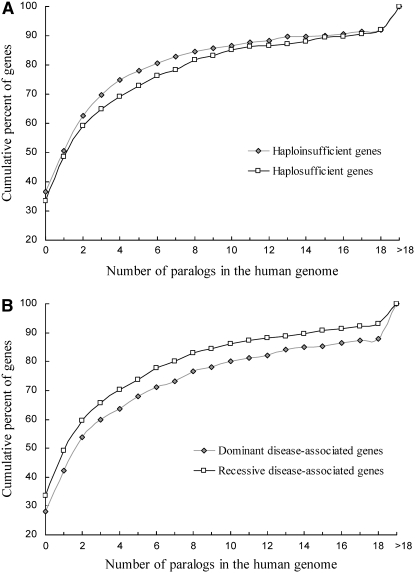Figure 1.—
Human haploinsufficient genes do not have more paralogs than haplosufficient genes. (A) Cumulative distributions of the number of paralogs of haploinsufficient and haplosufficient genes in the human genome. No significant difference between haploinsufficient and haplosufficient genes is found (P = 0.29, two-tailed Mann–Whitney U-test; P = 0.66, two-tailed Student's t-test). (B) Cumulative distributions of the number of paralogs of dominant disease-associated genes and recessive disease-associated genes in the human genome. Dominant disease genes have significantly more paralogs than recessive disease genes do (P = 0.003, two-tailed U-test; P = 0.02, two-tailed t-test).

